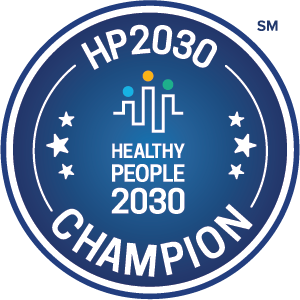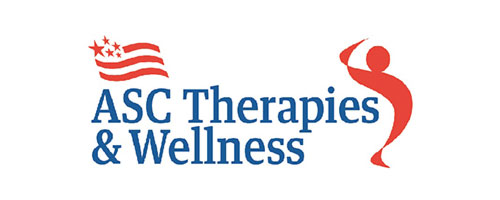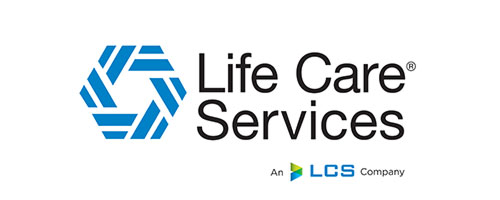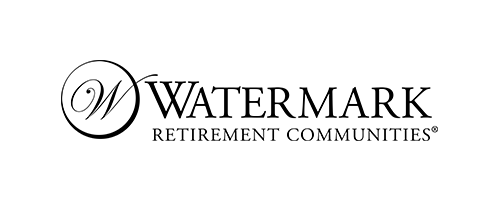ICAA Research Review, Volume 24, Issue 03
ICAA Research Review is published monthly for ICAA members. Complimentary issues are sent periodically to people who register.
In this issue
- Stats: Only 15% of adults get palliative care at home in last year of life
- Three pillars of psychological safety at work revealed
- Walking, reminiscing boost brain health in older Black adults
- Does trying to look younger curb ageism?
- Physical activity, inflammation tied to age-related skeletal changes
- Tech Talk: New wearable could retrain the brain after stroke
Stats: Only 15% of adults get palliative care at home in last year of life
Starting palliative care in the months before death is linked to a more positive end-of-life experience, including improved quality of life, less anxiety, better pain and symptom management, and potentially less aggressive care at the end of life. However, Canadian estimates indicate that only 15% of people receive palliative care at home in the last year of life. It’s an issue active-aging professionals should be aware of.
Researchers analyzed data on almost a quarter million community-dwelling older adults with at least one home care assessment between August 2018 and September 2019. Using a tool called RESPECT, which was developed to help identify frail older adults' need for palliative care, the research team predicted the risk of dying within six months of an assessment and looked at what health services people received.
They found that only about half of the individuals who had an estimated life expectancy of less than three months had received formal palliative home care. Those who had received palliative home care had been flagged by physicians as having a terminal prognosis.
"Palliative care is an essential component of a holistic, comprehensive and patient-centered approach to care for all people with a life-limiting illness from the time of diagnosis with the disease," said Dr. Amy Hsu, investigator at the Bruyère Research Institute and faculty in the Department of Family Medicine at the University of Ottawa, senior author of the study.
"A substantial proportion of clients likely in their last few months to years of life do not receive any palliative care and continue to be admitted to hospitals and long-term care homes," added Maya Murmann, research associate at the Bruyère Research Institute, who is supporting the integration of RESPECT in various health settings. “Most Canadians want to die at home or in a home-like environment, surrounded by their loved ones. When individuals are not supported to die in the community, their end-of-life care experiences may be misaligned with their preferences."
The RESPECT calculator is available at ProjectBigLife.ca. The researchers are working with partners in home, community care, and long-term care to implement RESPECT in their settings.
SOURCE: Canadian Medical Association Journal (February 26, 2024); Murmann M, et al. CMAJ February 26, 2024 196 (7) E209-E221; DOI: https://doi.org/10.1503/cmaj.221513
KEYWORDS: Palliative care, End-of-life
To read the full article, click here
[top]
Three pillars of psychological safety at work revealed
Making sure that employees feel like they can speak their minds, take risks, and be themselves without fear of being judged is part of building a strong company culture and a psychologically safe workplace. The guidance given here could be relevant for all active-aging settings.
Adapted from Timothy Clark's "Four Stages of Psychological Safety," McLean & Company's "Introduction to Psychological Safety in HR" outlines a path to increased psychological safety at work that builds on three key pillars:
- Preventing harm
- Promoting health
- Resolving incidents and concerns
The guide provides HR with the information and tools to convey best practices for executives, senior leadership, people leaders, and employees in building psychological safety at work, and is divided into the following sections
- Introduction: Defines psychological safety at work and provides an overview of the related benefits and risks.
- Framework: Describes four stages of psychological safety – inclusion, learning, contributing, and challenging -- and outlines objectives, norms, leadership behaviors, and artifacts for each stage.
- Fundamentals: Presents an overview of key stakeholders’ responsibilities and best practices for building psychological safety at work
"Psychological safety is not a checklist item or quick fix. It is an ongoing effort that requires commitment from key stakeholders and strong alignment between the organization’s norms, leadership behaviors, and day-to-day processes," McLean says.
The guide provides a wealth of data as well as case examples and visualization exercises. Implementing the steps in the guide can help create an environment where employees feel included and safe to learn, contribute, and challenge in your workplace, according to McLean.
SOURCE: McLean & Company; Introduction to Psychological Safety for HR: A guide to building psychological safety at work. KEYWORDS: HR, Psychological safety, Workplace wellness
To download the guide, click here
[top]
Walking, reminiscing boost brain health in older Black adults
An Oregon Health & Science University (OHSU) research program that enlists older Black adults to walk through and reminisce about historically Black neighborhoods in Portland -- which now look very different after rapid change through gentrification -- may help improve cognitive function, a new study finds. The findings may have particular relevance for seniors centers, area agencies on aging and other community-based settings.
Participants not only improved their health and mood, but researchers also found improvements in cognitive function among those who started the study with mild memory loss.
The program, known as Sharing History through Active Reminiscence and Photo-Imagery, or SHARP, combines the known benefits of exercise and social connection with an added component of active reminiscence. The reflections are prompted by memory markers on smart tablets in the form of news clippings, photos, advertisements, or artifacts like political campaign buttons.
SHARP involves groups of three participants walking 72 distinct, mile-long routes three times a week over six months. The sustained routine of walking, reminiscing, and socializing appears to make a cumulative impact on health.
Clinical trial participants benefited from connecting directly with individuals in a location that has deep historical and cultural resonance to their broader community, according to lead author Raina Croff, PhD. "Those kinds of connections are not only frayed by gentrification of historic Black neighborhoods, but also by larger societal forces in which many people work remotely and chatting with neighbors has been usurped by the allure of screens."
Almost all study participants reported that their mood had improved both immediately after their walks and at the conclusion of the study period.
SOURCE: Oregon Health and Science University (February 29, 2024); Croff R, et al. The Gerontologist, gnae019, https://doi.org/10.1093/geront/gnae019
Published: 27 February 2024
KEYWORDS:
To download the full study, click here
[top]
Does trying to look younger curb ageism?
Every year, millions of older Americans, including active-aging residents and members, spend money and time trying to look younger than they are -- coloring graying hair, buying anti-balding products, using teeth whiteners and wrinkle fillers, and more.
Now, a recent study looks at what this kind of effort means for older adults' experiences with the ageism, as well as how a person's perception of how old they look relates to both their positive and negative age-related experiences, and their physical and mental health.
The data were drawn from a nationally representative sample of 2,006 US adults (median age, 63; 52%,women, 71%, White) who completed the National Poll on Healthy Aging in 2019.
In all, 59% of respondents said they think they look younger than other people their age. The percentage was slightly higher among women and among people with higher incomes, more years of education and current employment.
In contrast, only 6% said they look older than other people their age. The rest said they look about the same as their peers.
About one-third of respondents (35%) had invested time or money toward looking younger. Those more likely to say they'd done so included women, those with higher incomes and people of Hispanic origin.
The poll also asked about both positive and negative experiences related to aging and ageism. Positive ones included being asked for advice and wisdom, and feeling a strong sense of purpose, while negative ones included having others assume they have difficulty seeing, hearing, remembering or using technology.
Those who felt they look younger than other people their age were more likely to score higher on the scale of positive age-related experiences, and lower on the scale of negative ageism experiences.
Those who said they had invested time or money in looking younger also were more likely to score higher on the positive scale; however, they were also more likely to score higher on the scale of negative experiences related to aging.
Meanwhile, those who said they look older than others their age were much more likely to score higher on the negative ageism experiences scale, and lower on the positive age-related experiences scale.
Overall, those who had more positive and fewer negative experiences related to aging were also more likely to say they're in good or very good health, both physical and mental.
SOURCE: Michigan Medicine (February 29, 2024); Allen JO, et al. Psychology and Aging, 2024; DOI: 10.1037/pag0000800.
KEYWORDS: Ageism, Self perception
To download the full study, click here
[top]
Physical activity, inflammation tied to age-related skeletal changes
New research indicates that some age-related changes in gene and protein expression in the skeletal muscles of older individuals may be affected more by physical inactivity and chronic inflammation than aging alone. This intriguing finding means some aspects of aging may be changeable, or soon will be.
Physical inactivity and chronic inflammation are the most important drivers of secondary aging – that is, changes over time that are caused by extrinsic factors such as diseases or poor health practices.
In a study that included 15 young healthy people and 8 young and 37 older patients with knee or hip osteoarthritis, who experienced long-term inactivity and chronic inflammation, investigators found that age-related changes in the expression of approximately 4,000 genes regulating various processes such as mitochondrial function, protein balance, immune, and inflammatory responses were related to physical inactivity and inflammation rather than primary (chronological) aging.
The team also identified fewer genes (approximately 200) where the opposite was true, as their expression was related to primary aging rather than other factors.
“The findings of this study could…provide novel opportunities for the diagnosis and therapy of sarcopenia and other age-associated diseases,” the authors conclude. The research is in the early stages but can lay the groundwork for future studies.
SOURCE: Wiley (February 21, 2024); Kurochkina NS, et al. Aging Cell; first published February 21, 2024.
KEYWORDS: Genes, Aging, Inactivity, Inflammation
To download the full study, click here
[top]
Tech Talk: New wearable could retrain the brain after stroke
Stroke survivors often experience uncontrollable spasms that can twist their arms and hands into fists. The only treatments are expensive, often painful injections of botulinum toxin or oral medications that can be sedating. Both offer only temporary relief. But help may be on the way.
Engineers at Stanford University and the Georgia Institute of Technology have developed a glove-like wearable medical device that they say achieves as good or better results as injections or drugs by applying simple, high-frequency mechanical vibrations to the hands and fingers.
Patients in various studies wore the VTS device three hours a day for eight weeks. More than half of the participants who received regular botulinum injections had equal or better results with daily use of the VTS glove.
“There are significant improvements in symptoms using the simulation method. And we think it can potentially address several effects of stroke – numbness, spasticity, and, for some, limited range of motion,” said Caitlyn Seim, a postdoctoral researcher and initiator of the project. “We’re most excited about treating spasticity because it affects so many people’s quality of life and has such limited treatment options.”
The glove has been developed over a period of years, first as a tool to help people learn motor skills, and later as an interactive music exercise tool for people with partial spinal cord injuries. The latest version of the VTS device wraps around the wrist, palm, and fingers and includes motors that provide continual high-frequency stimulation to individual fingers as well as muscles in the hand and wrist. The vibrations are subtle and unobtrusive – similar to the intensity of a cell phone vibrating.
SOURCE: Stanford University (February 12, 2024). Seim C, et al. Archives of Physical Medicine and Rehabilitation; Volume 104, Issue 10, October 2023, Pages 1565-1572; and Seim C, et al. Frontiers of Human Neuroscience, 29 August 2023; Sec. Motor Neuroscience; Volume 17 - 2023; https://doi.org/10.3389/fnhum.2023.1206027
KEYWORDS: Stroke, Spasticity, Vibratory stimulation
To learn more about the VTS device in an article by Andrew Myers posted on the Stanford University website, click here
To download the team’s latest studies, published in Archives of Physical Medicine and Rehabilitation and in Frontiers in Human Neuroscience, click Link1 and Link2
--reported by Marilynn Larkin
Suggestions? Email mlarkin@icaa.cc
[top]
Disclaimer
ICAA Research Review shares knowledge and information. The newsletter is not intended to replace a one-on-one relationship with a qualified health care professional and is not medical advice. The ICAA encourages you to make health and business decisions based upon your own research and in partnership with a qualified professional.






























